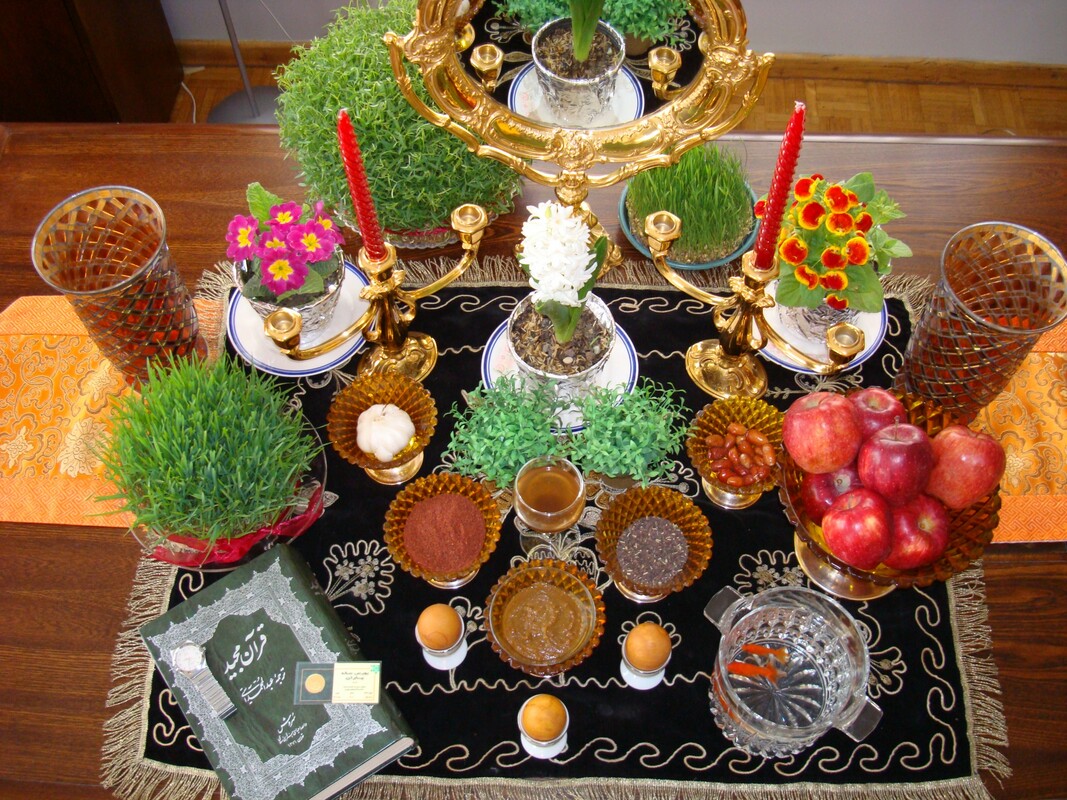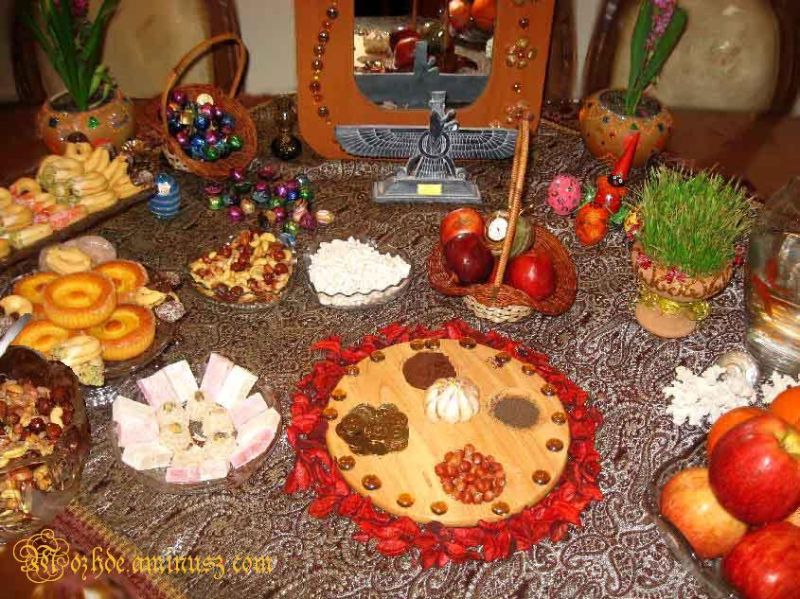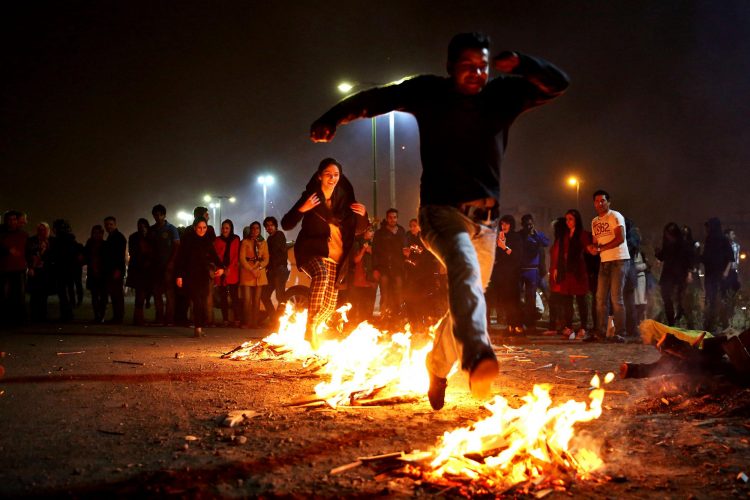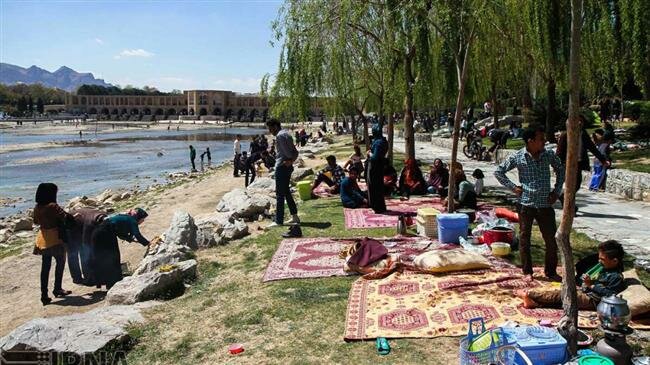March 20th marks the Persian New Year, Nourooz, on the spring equinox. The time of the new year is celebrated at the exact moment when the sun passes the equator in the Northern Hemisphere and night and day are of equal length. Nourooz, meaning “new day” in Farsi, has been celebrated for over 3,000 years across many Middle Eastern cultures. At the time of the equinox, families gather together to exchange gifts and welcome the new year.
In preparation it is customary to set up a Haft Seen, pictured above. Haft Seen means “seven S’s,” because each item starts with the letter S in Farsi and holds symbolic wishes for the new year. The greenery, Sabzeh, is sprouted from wheat or barley, and symbolizes growth and rebirth. Samanu, a sweet pudding made from wheat germ, symbolizes wealth. Senjed, fruit dried from an Oleaster tree, symbolizes love. Seer, garlic, symbolizes health because garlic is often used in traditional Persian medicine. Seeb, apples, symbolize vibrance and beauty. Somaq, or Sumac, is a spice used on rice and kabob, and is said to be the color of the sunset, symbolizing the beginning of a new day. Serkeh, vinegar, symbolizes patience and old age, because it takes a long time to make.
People also clean their house, called Khaneh Takani, literally “shaking the house; buy new clothes to be worn on the day of the new year; and withdraw uncirculated money to be exchanged as gifts.
People also clean their house, called Khaneh Takani, literally “shaking the house; buy new clothes to be worn on the day of the new year; and withdraw uncirculated money to be exchanged as gifts.
Chaharshanbeh Suri falls on the Tuesday before the new year. A tradition carried over from Zoroastrianism, people jump over fire with the intention of cleansing themselves of their illnesses and wrongdoings from the previous year. While leaping over the flames it is customary to chant سرخی تو از من، زردی من از تو which translates to “take my yellowness from me and give me your red,” yellow symbolizing disease and discomfort, and red meaning prosperity, health, and warmth.
On the thirteenth day after Nourooz, families will go on a picnic and place the sabzeh (grass from the Haft Seen set up) in a lake or river. The young people will often tie knots in the blades of grass, expressing the hope to find a partner in the coming year.
On the thirteenth day after Nourooz, families will go on a picnic and place the sabzeh (grass from the Haft Seen set up) in a lake or river. The young people will often tie knots in the blades of grass, expressing the hope to find a partner in the coming year.





